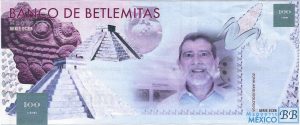A Museum Worth 100 Marcs
Economists are forever complaining about the public’s ignorance of economics. You can’t really blame the public: most of what academic economists produce these days is incomprehensible to anyone who hasn’t earned an A in advanced econometrics, and far too much of what economists say in less technical settings is driven more by political biases or commercial interests than by conclusive research. There’s a lot economists don’t know, and too often you won’t find them admitting it.
That said, there are some important economic concepts that people need to grasp to reach their own judgments about economic issues. Many U.S. high schools now seek to teach such things, with mixed success. On a recent trip to Mexico City I saw what might be a more promising approach than classroom lectures, the Interactive Museum of the Economy, known by its Spanish acronym as MIDE.
MIDE, housed in an eighteenth-century convent in the center of Mexico City, claims to be the world’s first museum dedicated to economics. Its target audience is high school students, large numbers of whom come to visit each week. Costs are covered by a modest admission fee and substantial contributions from the Banco de Mexico, the central bank, and private financial institutions.
The museum is short on artifacts, long on hands-on activities that introduce such concepts as scarcity, division of labor, comparative advantage, and the trade-off between consumption and investment. Exhibits don’t just talk about the role of banks in society and the effects of inflation, but offer screens students can use to explore how bank deposits are invested and see how prices for different commodities change at different rates. Docents barely older than the visitors roam the exhibit halls, answering questions and drawing together small groups to play table games that also teach economic ideas, while more experienced educators offer brief programs in screen-filled rooms just off the exhibition floor. After you’ve learned about the role of money in society, you can order up a hundred-peso note issued by the Bank of the Bethlehemites–the religious order that formerly owned the building–and featuring your own image.

Mexico, of course, is a vast country, and most high school students will never have the opportunity to visit the museum. MIDE is now developing an app to make itself accessible to students all over the country.
I’ve never come across a museum quite like this before. Sure, many central banks operate their own museums, but most of them are, to be polite about it, places a teenager would never think of setting foot in. There’s much to be said for making learning about economics a fun social activity rather than an unpleasant obligation. Washington, where I live, has museums about everything from the bible to the U.S. Navy. A hands-on museum about how the economy works would be a fine addition.
Tags: banking, economics, inflation, Mexico